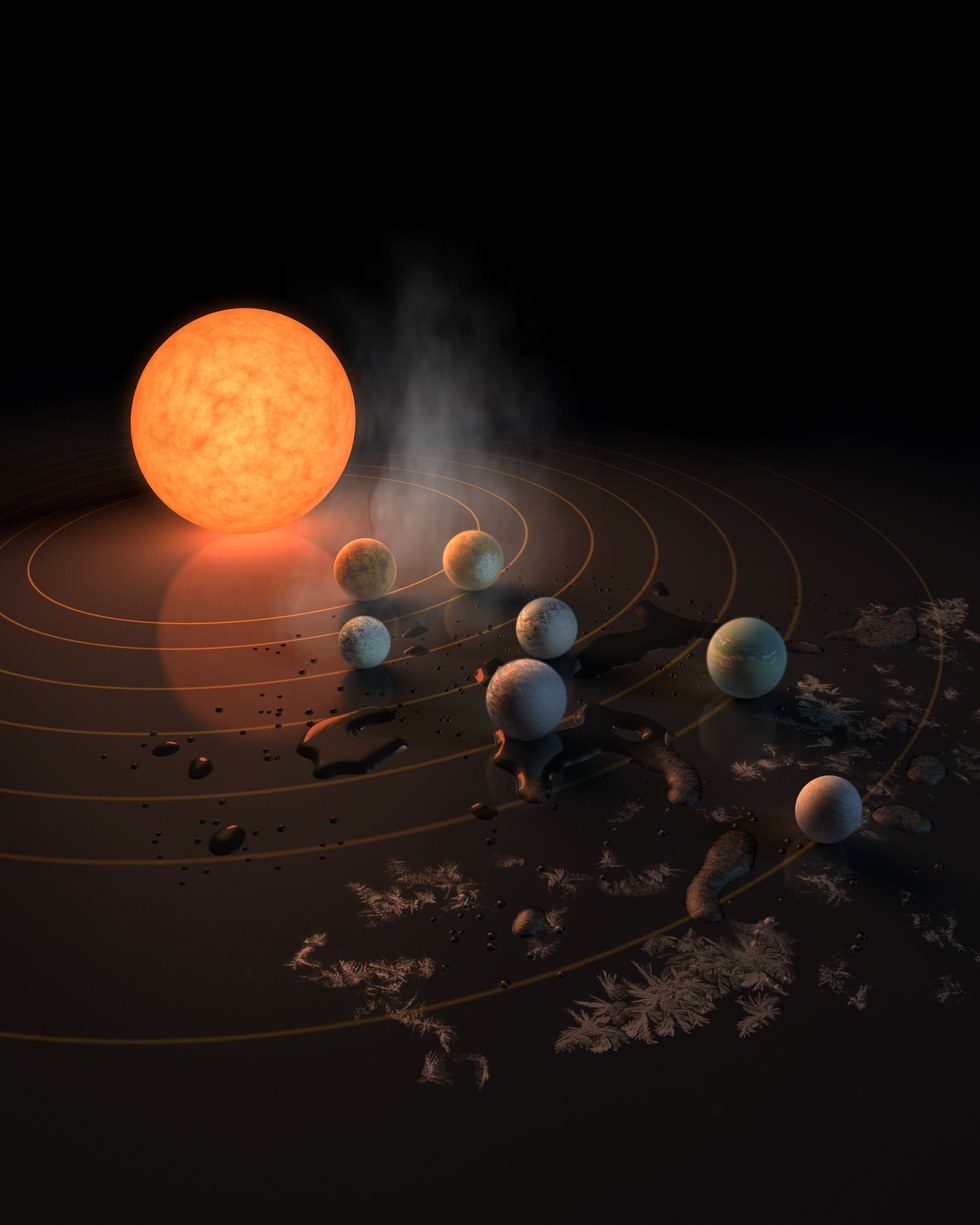A little star located a neighborly 40 light-years away has at least seven planets in its clutches, all about the size of Earth.
Three of the seven planets orbit in the star's so-called "habitable zone," where temperatures are suitable for water, if any exists, to pool on their surfaces.
"They could have some liquid water and maybe life," said lead researcher Michael Gillon, with the University of Liege in Belgium.
The discovery, reported Wednesday in the journal Nature, puts the planets orbiting the star TRAPPIST-1 at the top of astronomers' list of places to look for life beyond the solar system.
"I think that we've made a crucial step towards finding if there is life out there. I don't think that before we had the right planets to discover… if there was [life]. Here, if life managed to thrive and releases gases similar to that that we have on Earth, then we will know," said University of Cambridge astronomer Amaury Triaud.
Scanning the planets for methane, water, ozone and other chemicals tied to life will take another generation of telescopes, including the James Webb Space Telescope, which is scheduled to launch next year.
Scientists reported last year that TRAPPIST-1 had three planets in orbit. Follow-up studies with ground telescopes and NASA's infrared Spitzer space telescope revealed at least four more sister words, all orbiting closer to their parent star than Mercury orbits the sun.
"It would be really fun if there were more," Triaud wrote in an email to Seeker.
In a related essay in Nature, astronomer Ignas Snellen, with Leiden Observatory in The Netherlands, noted that even if the TRAPPIST-1 planets are lifeless now, they have lots of time for it to evolve.
"In a few billion years, when the Sun has run out of fuel and the solar system has ceased to exist, TRAPPIST-1 will still be only an infant star. It burns hydrogen so slowly that it will live for another 10 trillion years more than 700 times longer than the Universe has existed so far, which is arguably enough time for life to evolve," Snellen wrote.
Read more at Discovery News


No comments:
Post a Comment